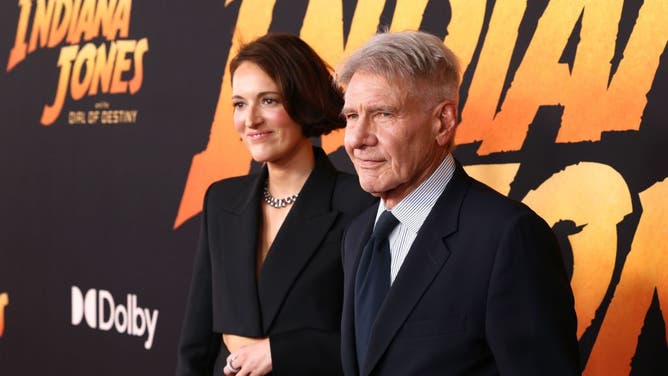Indiana Jones Is Disney's Latest Disaster Of Their Own Making
Disney's box office performance continues to struggle.
The entertainment giant has suffered a string of high-profile disasters recently, a trend that doesn't appear to ending anytime soon.
"Lightyear," "Strange World," "Little Mermaid," "Ant Man," and Pixar's "Elemental" have all lost Disney money over the past few years.
READ: DISNEY’S LATEST FAILURE SHOWS THEY STILL HAVEN’T LEARNED THEIR LESSON
While not all of these films incorporated political messaging, "Elemental" highlighted the studio's first "non-binary" character in a children's film. "Lightyear" and "Strange World" also inexplicably inserted political messages into animated projects.
Despite their vast wealth, Disney still needs their projects to turn a profit. Not simply for box office receipts, but for ancillary marketing and theme park possibilities.
Yet for what should be one of their most bankable franchises, "Indiana Jones," it's likely the studio takes another substantial financial loss.
"Dial of Destiny" needs to gross roughly $600 million to break even. Based on the initial returns, that's extremely unlikely.
And once again, it's their own fault.

LOS ANGELES, CALIFORNIA - JUNE 14: (L-R) Phoebe Waller-Bridge and Harrison Ford attend the Indiana Jones and the Dial of Destiny U.S. Premiere at the Dolby Theatre in Hollywood, California on June 14, 2023. (Photo by Jesse Grant/Getty Images for Disney)
Modern Disney Doesn't Understand What Made Their Films Popular
"Indiana Jones and the Dial of Destiny" isn't overtly political or even an exceptionally bad movie. But it does contain one of the studios other most frustrating mistakes.
It degrades its own hero, and one of film's most important and influential characters.
Indiana Jones is meant to be a swashbuckling hero who makes mistakes, but uses physicality and ingenuity to overcome them.
The original trilogy virtually ignored his private life in favor of plot, outside of some character and relationship building with Sean Connery's Henry Jones character.
There are brief snippets of a career, showing how popular Jones is among students.
But "Dial of Destiny" decides to portray Jones as a sad, depressed, lonely shell of his former self. He lectures to a half-empty classroom of bored students and naps in a recliner.
Some of that comes down to Harrison Ford's age, but it's also a purposeful choice by Disney and the filmmakers.
Jones was wish fulfillment; much in the same way that James Bond is wish fulfillment.
Instead, Disney decided that in a modern story, Jones would need the help of Phoebe Waller-Bridge's Helena Shaw to recover any bit of the confidence and self-belief he once had.
It echoes a similar choice made with Luke Skywalker in "Star Wars: The Last Jedi."
Luke was lonely, bitter and full of regret. At least until Rey showed up to show him the way.
Undermining two of the most legendary characters in film history is a bewildering, bizarre choice. But that's exactly what Disney/Lucasfilm decided to do.
Many critics have blamed Kathleen Kennedy, but the underlying cause is likely more broad than just one person. Disney has no idea what made its films popular, so instead of reinforcing what people love, they undercut it.
They didn't understand the Indiana Jones or Luke Skywalker characters, so they undermined their legacies by bringing in other characters, preferably Kathleen Kennedy stand ins, to bring them back on course.
Beyond politics, that's one of the many lessons modern Disney needs to learn. Respect your history, don't destroy it.